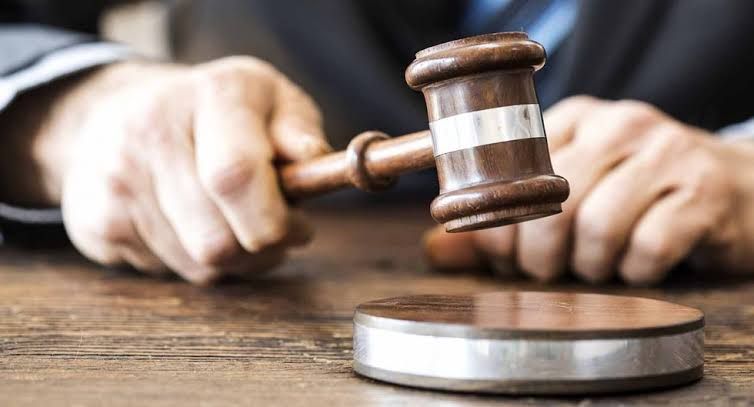A conflict between Internet shutdowns and Freedom of Speech
Primarily, it is the government, be it in the Centre or state, which is responsible for ordering an internet shutdown using its security apparatus. The sole intention behind a shutdown is the need to prevent actions that might lead to public disorder. This includes spread of misinformation, messages that disturb communal harmony and messages that may incite violence.
Most recently, an internet shutdown was ordered in the state of Manipur following the violent clashes that broke out between the Meitei and Kuki tribal communities. Similarly, the Government of Haryana ordered shut down of the internet along with the suspension of services such as SMS and phone calls in the town of Nuh following communal violence.
It is in such situations that security agencies are compelled to take actions where the chain of this false information is broken to safeguard the interests of the public and public property.
In this context, temporary suspension of the internet in conflict zones can help security agencies in ensuring that non-state actors or arsonists are cut off from their supply of weapons and artillery.
Legality of shutdowns
Till recently, the implementation of an internet shutdown fell under the ambit of Section 144 of the Criminal Procedure Code (CrPC). This section deals with curfew and restricts gatherings of more than five people at the place where the curfew has been imposed. The District Magistrate as well as the police have complete power to make arrests of all those who violate curfew and act against the order. Though the text of this section does not extensively deal with internet blocking, the Gujarat High Court upheld this application of section 144 for internet blocking in the case of Vyas vs. the State of Gujarat. Regarding the Patidar agitation, the Court found the reason for the implementation of an internet shutdown for the sake of maintaining public order. Along with Section 144 of the CrPC, the Governments also made use of Section 5 (2) of the Indian Telegraph Act, 1885 operating under some form of ambiguity. To make matters simpler, the Government, in the year 2017 notified rules under Section 7 of the Indian Telegraph Act, 1885 and implemented the Temporary Suspension of Telecom Services (Public Emergency or Public Safety) Rules, 2017.
These rules now grant legal powers to effect an internet shutdown in any region where there is a tendency of unrest along with Section 144 of the CrPC.
Criticism
The biggest opposition against the shutdown of the internet is that it is a grave violation of the Fundamental Right of Freedom of Speech and Expression under Article 19 of the Constitution. While a shutdown during an unrest may seem viable, its viability is contingent upon its duration. A shutdown that goes on for days, months or even years together is highly unconstitutional and prevents the public from expressing their opinions or thoughts in a free manner.
The Government has come to be seen as a bully in recent times insofar as internet shutdowns are concerned. Especially in the case of Kashmir, (post abrogation of Article 370) there was a blanket ban on the internet for many months forcing citizens and civil society to file Writ Petitions in the Supreme Court.
The Supreme Court in its landmark judgement in the Anuradha Bhasin vs. The Union of India case held that prolonged internet shutdowns are unconstitutional and that the right to access the internet flows through Article 19 of the Constitution and is also part of the Fundamental Right of Freedom of Press as most news outlets operate digitally. It instructed the Government that at all times when a shutdown is ordered, sufficient documentary evidence must be made public explaining clearly the reason for such a shutdown.

Endnotes
- Kundu, Indrajit. “Internet Services Suspended in Manipur 2 Days after Resumption.” India Today, 3 Sept. 2023, www.indiatoday.in/india/story/internet-services-suspended-in-manipur-2-days-after-resumption-2440914-2023-09-26. Accessed 15 Oct. 2023.
- Ghosh, Poulomi. “Mobile Internet Suspended in Haryana’s Nuh after MLA’s Arrest Fearing Tension.” Hindustan Times, 15 Sept. 2023, www.hindustantimes.com/india-news/mobile-internet-suspended-in-haryanas-nuh-after-congress-mlas-arrest-emergency-situation-101694757389026.html. Accessed 15 Oct. 2023.
- PIB Delhi. “Parliament Approves Resolution to Repeal Article 370; Paves Way to Truly Integrate J&K with Indian Union.” Pib.gov.in, 6 Aug. 2019, pib.gov.in/PressReleasePage.aspx?PRID=1581391. Accessed 15 Oct. 2023.
- Dubey, Ajit Kumar. “Crackdown on WhatsApp Groups in Kashmir Hits Separatists and Militant Outfits Hard.” India Today, 5 May 2017, www.indiatoday.in/mail-today/story/whatsapp-shutdown-jammu-and-kashmir-separatists-militant-outfits-hard-stone-pelters-975295-2017-05-05. Accessed 15 Oct. 2023.
- —. “Union Home Minister Amit Shah Chairs First Session on ‘Global Trends in Terrorist Financing and Terrorism’ Theme of the 3rd ‘No Money for Terror’ Ministerial Conference in New Delhi Today.” Www.pib.gov.in, 18 Dec. 2022, www.pib.gov.in/PressReleasePage.aspx?PRID=1876948. Accessed 15 Oct. 2023.
- Jha, Mausam. “Security Forces Foil Attempted Weapon Loot in Manipur’s Thoubal District.” Mint, 5 July 2023, www.livemint.com/news/india/security-forces-foil-attempted-weapon-loot-in-manipurs-thoubal-district-1-killed-11688517342801.html. Accessed 15 Oct. 2023.
- Pravinkumar Chandrakant Vyas And … vs State Of Gujarat And Ors. on 14 August, 2001 (2001) 3 GLR 2755
- The Indian Telegraph Act, 1885, s 5(2).
- The Indian Telegraph Act, 1885, s 7.
- Temporary Suspension of Telecom Services (Public Emergency or Public Safety) Rules, 2017
- The Constitution of India 1950, art. 19
- Global Freedom of Expression, Columbia University. “Bhasin v. Union of India.” Global Freedom of Expression, globalfreedomofexpression.columbia.edu/cases/bhasin-v-union-of-india/.
- Anuradha Bhasin v Union of India AIR 2020 SC 1308
- Ram Jethmalani v. Union of India, (2011) 8 SCC 1
- The Constitution of India 1950, art. 19
Author:- Shaunak Kamtikar , a Student of Government Law College, Mumbai




